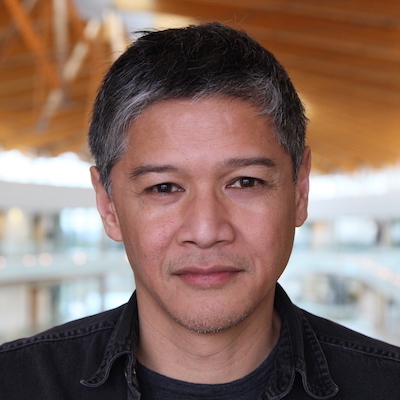Abstract
Historically, the ACM Multimedia Conference is split into a "technical" program and an "arts" program. These programs sometimes seem completely separate from one another, victims of a "semantic gap" between disciplines. The goal of this panel is to create a space in which scientists learn from artists, and arts from science. We need to discover new connections between modalities of research. In order to create the most exciting and powerful future forms of interactive multimedia systems, the ones that will create the most beneficial broader impact on humanity, we need to foster new collaborations between artists and scientists. This panel seeks to bridge the great divide of language and communities that has fragmented us, creating a new space for developing connections between the arts and sciences of multimedia research, as embodied through the artists and scientists of ACM Multimedia. The goal is to make this conference a premier site for catalyzing emergent connections.
Among the ancient Greeks, the techne, which included the sciences, were based in the arts. Our modes of knowledge production have since separated and grown alienated. "What weird stuff are those people doing?" To bridge the divide, we must understand and acknowledge differences, and use this as a basis for discovering common ground. In the sciences, knowledge is constructed empirically, through hypotheses and validations. Aesthetics and concepts play essential roles in how works of art are formulated to stimulate experiences. Where do these aims intersect and how might they inform each other?
In this conference, one track develops pattern recognition methods for content analysis and retrieval. Another develops network and system techniques. Applications invoke these methods in usable systems. Human-centered multimedia serves as a bridge connecting human experiences with algorithmic methods. The interactive art program develops new concepts of how multimedia can function culturally, amidst society, through tangible demonstrations of these concepts.
Juxtaposing differences in methodologies and epistemologies is a method for provoking thought and identifying connections, which can lead to the development of new knowledge [1]. The goal of the panel is to catalyze discussions that build a foundation of mutual understanding and respect, and from this foundation, to build new ideas and human relationships that can lead to fruitful collaborations in the cycles to come.
The panel will begin by asking each participant to characterize their approach to research, and to consider connections between the arts and sciences. "How do you formulate research goals and objectives? What are the most significant methods that you use to carry them out?" Significant contrasts in the epistemologies that underlie different modalities of research will be exposed. Artists will be asked, "How can multimedia content analysis, processing, retrieval, networking, applications, and human-centered systems contribute to your art? How can your art contribute to multimedia research in content analysis, processing, retrieval, networking, applications, and human-centered systems?" Scientists will be asked, "How can conceptual and embodied components of interactive multimedia artworks, creativity support tools, and artbased media collections contribute to your research? How can your research contribute to interactive multimedia art?"
These individual statements will be followed by discussion. Panel and audience members will be asked to synthesize perspectives across disciplines, to reflect on what they have learned from each other and how this can influence future research.




